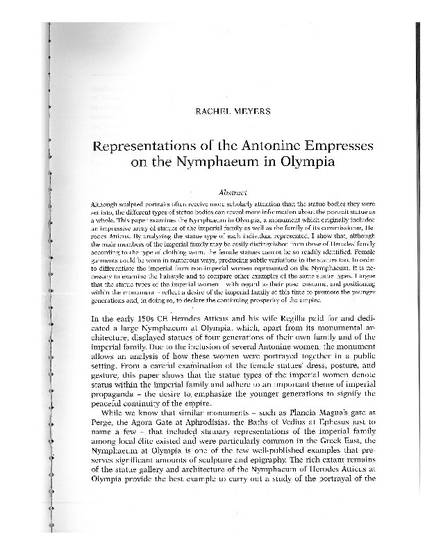
Although sculpted portraits often receive more scholarly attention than the statue bodies they were set into, the different types of statue bodies can reveal more information about the portrait statue as a whole. This paper examines the Nymphaeum in Olympia, a monument which originally included an impressive array of statues of the imperial family as well as the family of its commissioner, Herodes Atticus. By analyzing the statue type of each individual represented, I show that, although the male members of the imperial family may be easily distinguished from those of Herodes’ family according to the type of clothing worn, the female statues cannot be so readily identified. Female garments could be worn in numerous ways, producing subtle variations in the statues too. In order to differentiate the imperial form non-imperial women represented on the Nymphaeum, it is necessary to examine the hairstyle and to compare other examples of the same statues types. I argue that the statues types of imperial women – with regard to their pose, costume, and positioning within the monument – reflect a desire of the imperial family at this time to promote the younger generations and, in doing so, to declare the continuing prosperity of the empire.
Available at: http://works.bepress.com/rachel_meyers/9/

This article is published as Meyers, R., Representations of the Antonine Empresses on the Nymphaeum at Olympia,” Acta ad archaeologiam et artium historiam pertinentia, 22(2019); 37–53. Doi: 10.5617/acta.5754. Posted with permission.